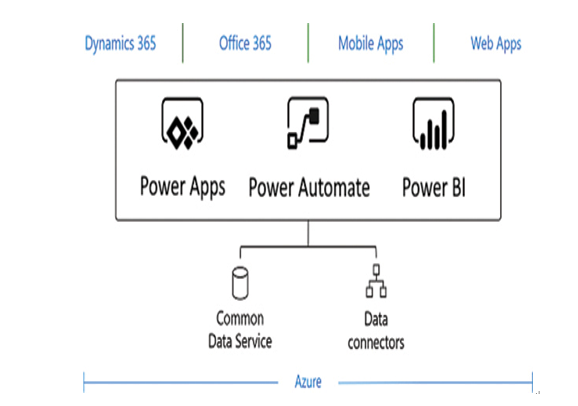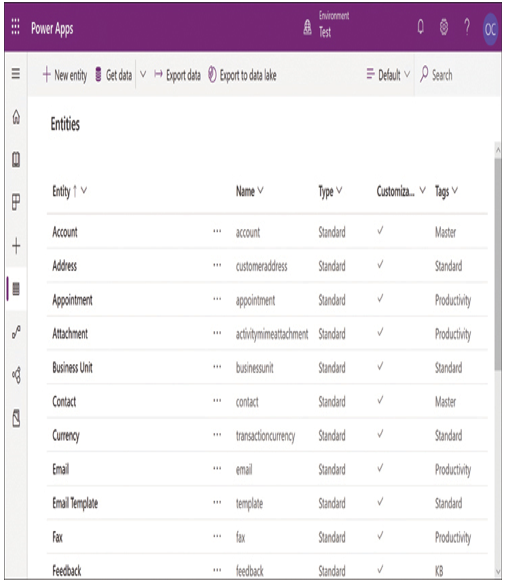Build solutions that use Common Data Service
As noted earlier, Power Platform tools, such as Power BI and Power Apps, can access hundreds of different data sources using the connectors supplied with the product, including local sources, such as Excel workbooks; network sources, such as database servers; and cloud-based sources, such as Microsoft SharePoint Online. After a user establishes a connection to one of these data sources, the connection remains in force as long as the source remains available.
The Common Data Service, as the name implies, is an underlying data storage solution included in Power Platform and hosted in the cloud by Microsoft Azure, which can function as an alternative to these outside sources by furnishing data to any of the Power Platform tools, as shown in Figure 1-18. The Common Data Service is also the default data store for Dynamics 365 applications, such as Dynamics 365 Sales and Dynamics 365 Customer Service.

FIGURE 1-18 Underlying services to the Power Platform tools
The Common Data Service stores data using entities, which are schemas designed to contain specific types of data. Entities consist of attributes, which contain specific types of data values. The Common Data Service includes a large collection of standard entities for frequently used data types, a few of which are shown in Figure 1-19.

FIGURE 1-19 Partial listing of entities in the Common Data Service
The entities provided in the Common Data Service are based on an open standard called the Common Data Model that Microsoft has published as part of its Open Data Initiative, developed in partnership with Adobe and SAP. The model consists of predefined entities, such as application/app, business unit, environment, region, solution, tenant, and user, each of which have attributes, relationships, and metadata. Designers can also create custom entities that are specific to the data types required by a particular organization.
It is common for users of Power Platform tools to access data from multiple sources and consolidate the data into a single report, app, or flow. As an alternative to maintaining multiple data source connections, it is possible to integrate the data from the sources into Common Data Service, which can then function as a single storehouse for all the necessary local, network, or cloud data, as well as the organization’s Dynamics 365 data. Users can import data from sources as a one-time event or configure Common Data Service to synchronize with the outside data sources at scheduled intervals, ensuring that the information in Common Data Service is always current.
The Common Data Service also includes a flexible, role-based security system that administrators can use to authorize users with any degree of access they require, down to specific records and fields.
